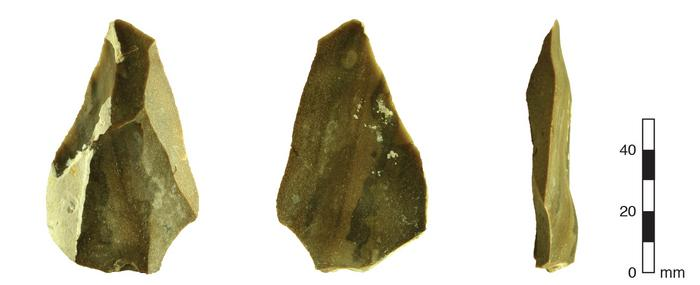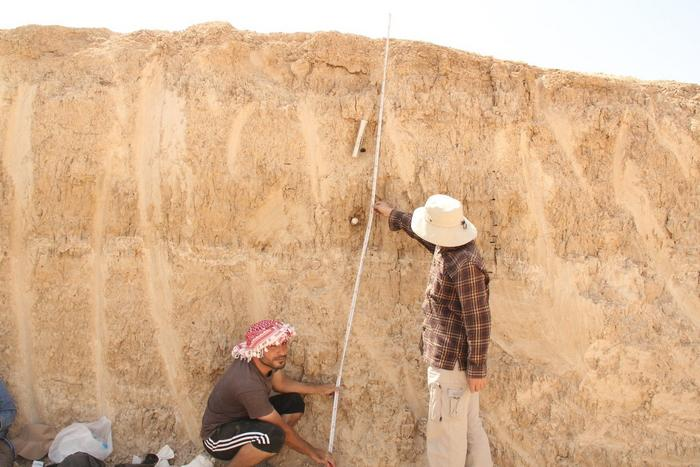Stone tools have been found in a dry river channel in Jordan that may mark the beginnings of humanity’s great migration out of Africa. The tools have been dated to 84,000 years ago, and coincide with a time when these channels would have been filled with water. The findings suggest people left Africa through the Sinai Desert and what is now Israel and Jordan, rather than Saudi Arabia.
Homo sapiens had been living in Africa for almost 200,000 years before the migration that led to settling the planet. In an effort to understand what changed to allow the migration to happen, archaeologists have found evidence that areas that are now desert were lush and inviting at the time. As a result, the path out of Africa, while narrow, was far from difficult. By the time conditions changed, humans were well entrenched in Arabia and possibly further afield.
Other human species had spread far beyond Africa long before Homo sapiens evolved, so there is no doubt the route had been traversable previously. Today, however, the Sinai is a hostile desert that would be hard to cross without technologies early humans lacked, even if there was a reason to do so. It seems likely this was also true for much of the first two-thirds of humanity’s existence as a species, but 80-90,000 years ago things were different.
Professor Paul Carling of the University of Southampton has dated the sediments in which hand tools were found at Wadi Gharandal, Jordan, to 84,000 years ago. Two nearby locations, Wadi Hasa and Gregra, have been found to have contained water around the same time.

A flake that was once a hand tool found in the Jordan Rift Valley seen from three angles.
Image credit: University of Southampton
“It’s long been thought that when the sea level was low, humans used a southern crossing, via the Red Sea from the horn of Africa, to get to southwestern Arabia,” Carling said in a statement.
However, low as sea levels got, it would never have been possible to walk across the Red Sea, whatever the Bible tells you. Such a southern route would have required at least some swimming/rafting and we don’t know if humans were up to that at the time.
“Our study confirms there was a well-trodden passage to the north, across the only land-route from Africa to Eurasia,” Carling said.

Samples were taken for optical luminescence dating, used to find the age of the sediments in which the tools were found.
Image credit: Dr Mohammed Alqudah/Yarmouk University
Even at its best, the path through the Sinai and the Middle East would have had some obstacles. “Previous studies have looked for large lakes as potential watering holes, in fact small wetlands were very important as staging posts during the migration,” Carling said. He thinks the pockets of water would have been surrounded by grasslands capable of supporting wildlife people could hunt. Previous studies have struggled to work out the timing of when these wetlands existed, leaving their relevance for human migrations ambiguous.
Evidence is rapidly growing of an early human presence in Arabia, which was also much more inviting at several points between 128,000 and 77,000 years ago, but Carling and colleagues think they got there by passing through Jordan.
There is some evidence an advance party of H. sapiens may have left Africa well before the major migration, with much more ancient signs of presence in Qafzeh Cave, Israel. However, it seems that for whatever reason these people didn’t survive, and certainly were not the ancestors of those who went on to settle most of the world. Quite likely the previous expansions were also at times when the passageway turned green, but the climate reverted before people reached areas that stayed hospitable under different conditions.
The study is published open access in Science Advances.
Source Link: First Modern Humans Out Of Africa Didn’t Have To Swim Or Float